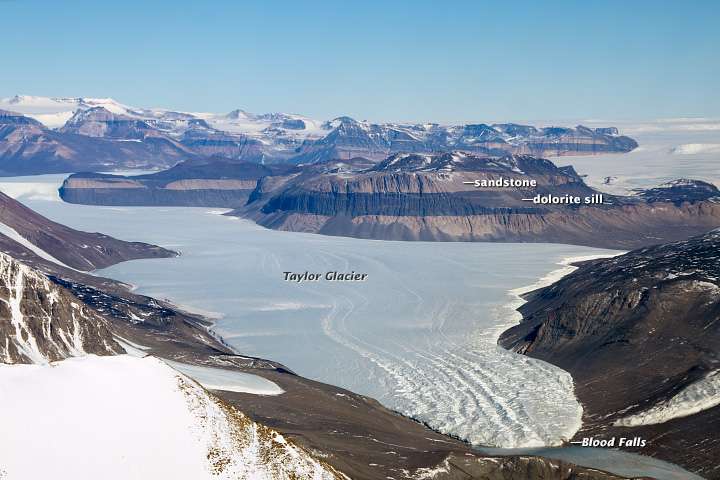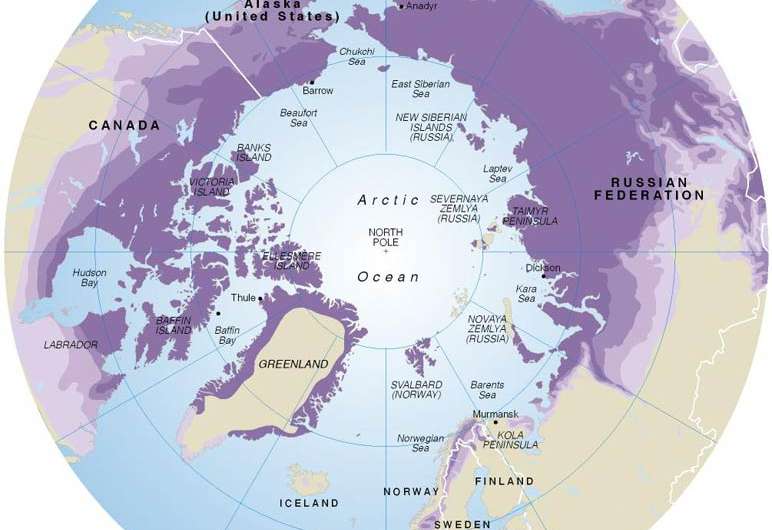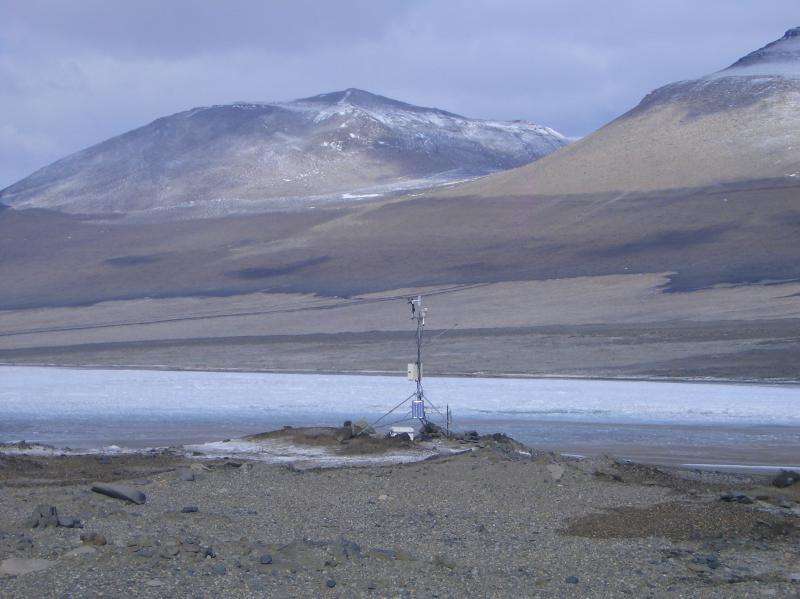Antarctic offers insights into life on Mars

The cold permafrost of Antarctica houses bacteria that thrive at temperatures below freezing, where water is icy and nutrients are few and far between. Oligotrophs, slow-growing organisms that prefer environments where nutrients are scarce, could provide clues as to how life could exist in the permafrost of Mars.
"The slow-growing lifestyle of oligotrophs is clearly beneficial in the environment as these oligotrophs often dominate the communities in which they are found," Corien Bakermans, assistant professor of microbiology at Penn State Altoona, told Astrobiology Magazine by email.
Bakermans was the principal investigator of a group of scientists who studied the lethargic bacteria from the Dry Valleys of Antarctica, a row of snow-free valleys that represents one of Earth's most extreme desert environments.
"In cold, low-nutrient environments, slow growth is the law, and there are fewer fast-acting processes that disrupt that slow growth," Bakermans said.
Thriving in Taylor Valley
Permafrost is ground that remains at or below 0° C (32° F) for at least two consecutive years. The permafrost of Antarctica's Dry Valleys house a small supply of bacteria, but the remote location makes sampling them a challenge. While permafrost exists in the more accessible Arctic regions, the Antarctic permafrost contains a higher organic count, although isn't as well studied, Bakermans said.
Bakermans examined Taylor Valley, the southernmost of the three main valleys that make up the McMurdo Dry Valleys. Rather than focusing on the microbes that lie on the surface, her team chose to delve into the permafrost.
After setting up a clean room over the site, Bakermans' team dug a pit roughly 20 inches (50 centimeters) square, using organic-free sterile stainless steel tools to avoid contaminating the site. They collected samples of the permafrost from a range of depths and transported them to another site where they could more easily study the microbes.
The samples they found were dominated by the phyla Acidobacteria and Gemmatimonadetes, bacteria that have not been seen in other Antarctic permafrost samples, Bakermans said. The two phyla—the second largest taxonomic rank, after kingdom—were identified as recently as 1997 and 2003, respectively.
"While these bacterial phyla are abundant in many environments, not much is known about them, given that they were only recently identified, and very few species have been successfully cultured, or grown in the lab," said Bakermans.

Finding them in Taylor Valley wasn't completely surprising, however.
"Many species from these phyla appear to be adapted to low-nutrient and low-water conditions, which are common in Taylor Valley," Bakermans said. "This likely contributed to the dominance of these phyla in Taylor Valley permafrost."
Scientists can study the genetic makeup of bacteria to track their relationships among various species. The team extracted two specific genes from bacteria in the permafrost and placed them into clones to characterize the challenging bacteria.
"All bacteria contain at least one copy of each of these genes, but very often we cannot grow these bacteria in the lab to examine them," Bakermans said.
"By transferring the genes from the permafrost bacterium to the clone, which can be grown in the laboratory, we can now examine the genes."
By changing the environment and monitoring production of carbon dioxide—the respiration of the organisms—the scientists were able to understand how various environments affected the bacteria. Samples were started at very low temperatures of -20° C (-4° F) and then incubated at a variety of higher temperatures to determine where they thrived. They found that activity occurred as low as -5° C (23° F) and peaked at 15° C (59° F).
The research was published in the journal FEMS Microbiology Ecology and was funded by the NASA Astrobiology Science and Technology for Exploring Planets program.
'How life survives'

The Dry Valleys of Antarctica serve as a proving ground for how life can endure in inhospitable environments, such as the arid regions of Mars. The valleys are cold and dry, though they don't reach Martian extremes, where the temperatures average about -80° F (-60° C). Their permafrost is similar to the permafrost and ground ice found in the middle to high latitudes of Mars.
While evolution on other planets may not follow the exact same track, studying bacteria that survive and thrive in the most inhospitable regions on Earth can provide some insight into what it might take for alien organisms to endure elsewhere.
"These valleys are important for understanding how life survives in extreme cold and dry," astrobiologist Chris McKay of NASA Ames Research Center told Astrobiology Magazine by email.
McKay was one of the co-authors on Bakermans' study. He specializes in valleys drier and higher than Taylor Valley in permafrost that contains less liquid, making it compositionally more similar to Martian soil, where only ice and vapor form rather than liquid water.

Low in humidity, the Dry Valleys don't have a lot of water, the ingredient required for life as we know it. Despite their Antarctic locale, the valleys lack snow and ice, forming the largest ice-free region on the continent.
The Dry Valleys can serve as a window into finding evidence for past life on Mars, as scientists scouring the regions find traces of previous generations as well as thriving organisms.
"They help us understand how evidence for life in the form of dead microorganisms is preserved under these conditions," McKay said.

Source: Astrobio.net
This story is republished courtesy of NASA's Astrobiology Magazine. Explore the Earth and beyond at www.astrobio.net .



















